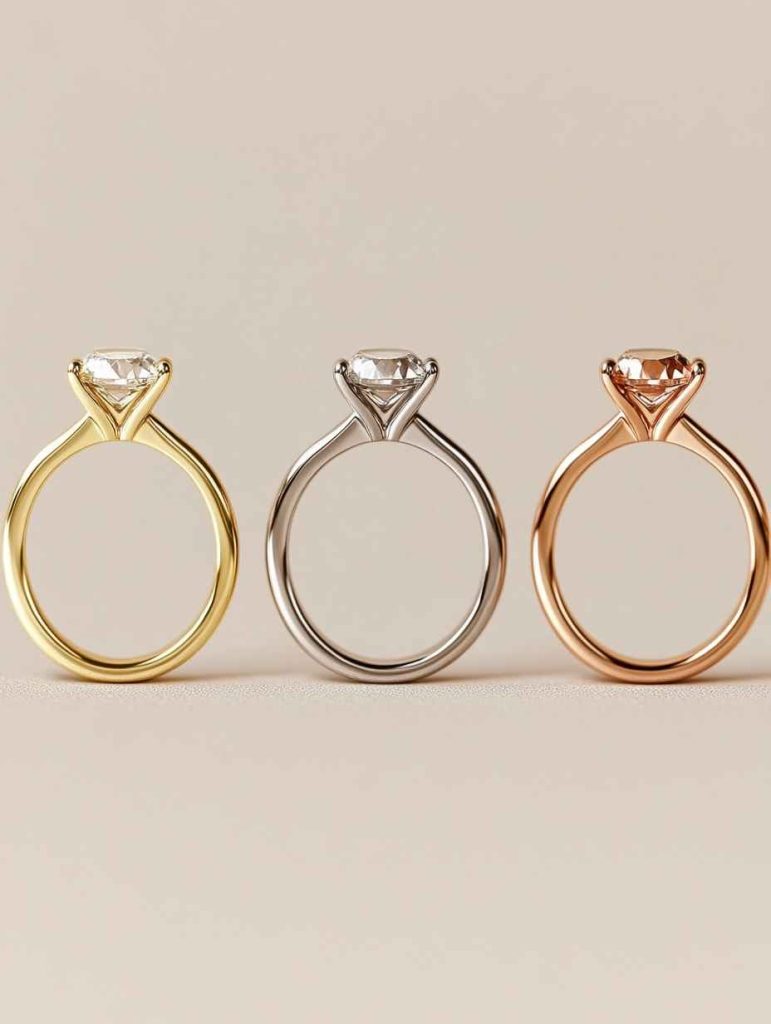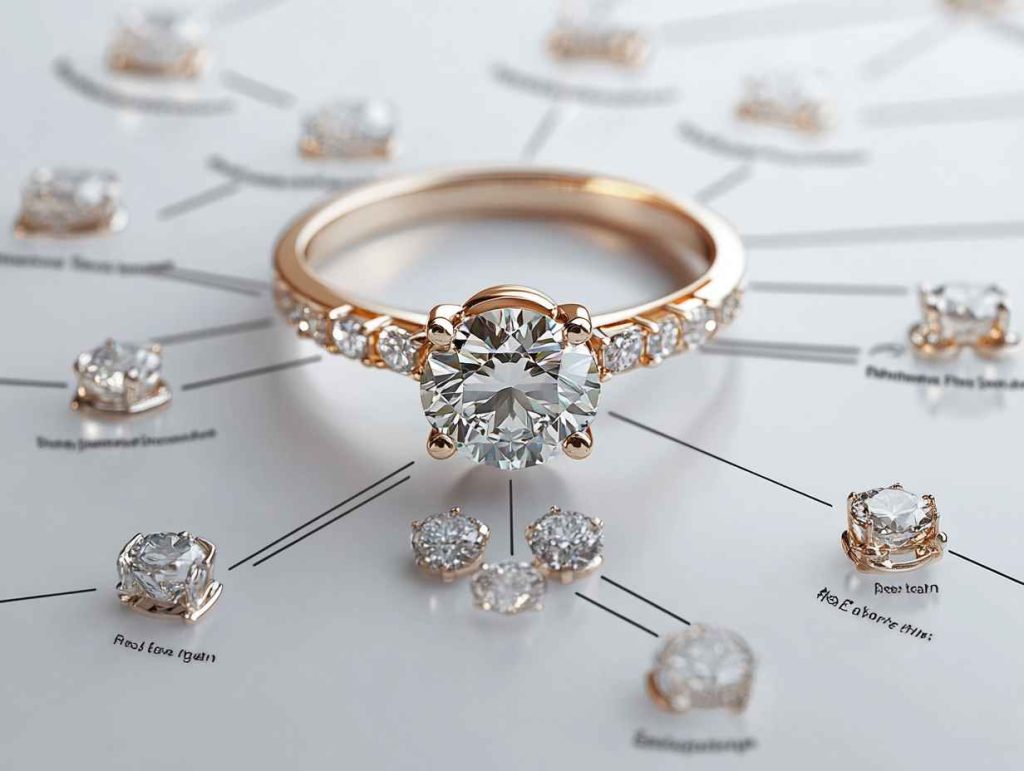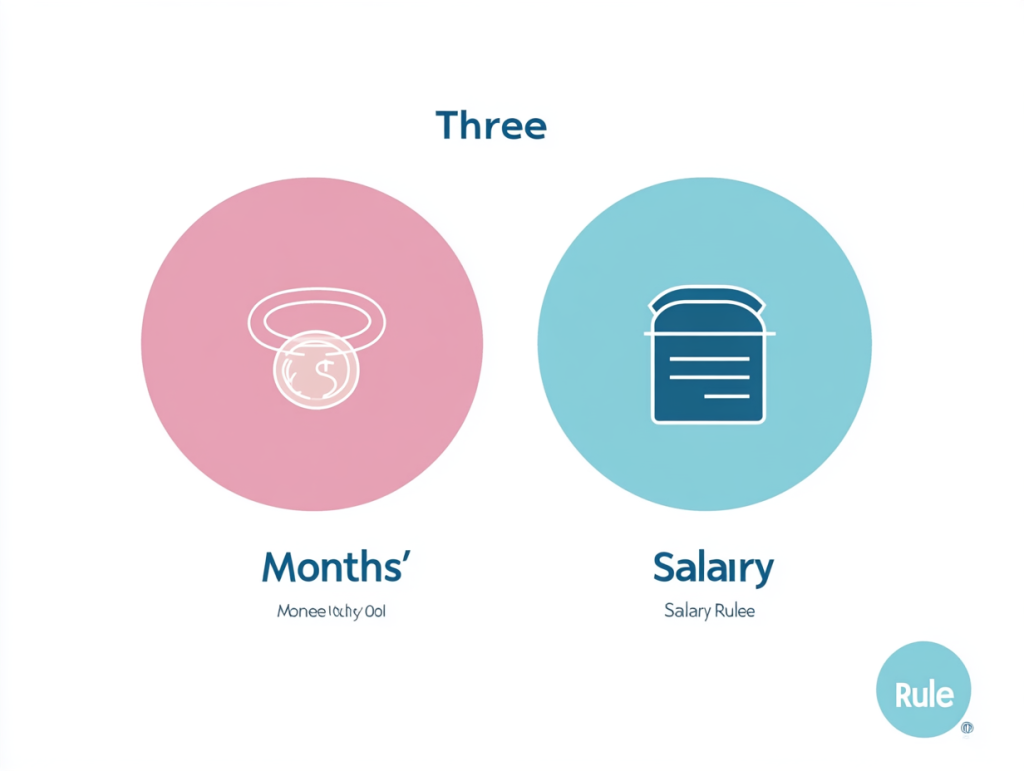Choosing the perfect engagement ring is an exciting and meaningful journey. But one question often lingers: how much should your engagement ring cost?
It’s a common concern, and there’s no one-size-fits-all answer. Let’s explore the factors that influence the cost, debunk some myths, and offer tips to help you find a ring that fits both your heart and your budget.
Understanding the Basics
Before diving into costs, it’s essential to understand what makes an engagement ring valuable.
The price of a ring is influenced by several key factors:

The Four Cs
- Carat Weight
- Definition: Measures the size of the diamond.
- Impact: Larger diamonds are rarer and more expensive. However, size isn’t everything—quality matters too.
- Cut
- Definition: Refers to how well the diamond is shaped and faceted.
- Impact: A well-cut diamond sparkles more, enhancing its beauty and value.
- Clarity
- Definition: Assesses the presence of internal inclusions or external blemishes.
- Impact: Fewer imperfections increase the diamond’s value and brilliance.
- Color
- Definition: Evaluates the diamond’s lack of color.
- Impact: Colorless diamonds (graded D-F) are more valuable. Slight color can reduce the price without significantly affecting appearance.
Metal Type
The choice of metal also affects the cost:
- Gold: Available in yellow, white, and rose. 14K gold is more affordable, while 18K gold offers a richer color.
- Platinum: More durable and naturally white, but generally pricier than gold.
- Silver: Affordable but less durable, not commonly used for high-end rings.
Design and Style
Intricate designs and custom settings can increase the price. Popular styles like solitaires are typically less expensive than halo or three-stone rings due to fewer stones and simpler settings.
Brand and Retailer
High-end brands and reputable jewelers often charge more for their expertise, craftsmanship, and assurance of quality.
Debunking Common Myths
The “Three Months’ Salary” Rule
One of the most persistent myths is that you should spend three months’ salary on an engagement ring. This idea originated from marketing campaigns and isn’t a hard-and-fast rule. Instead, focus on what you can comfortably afford without straining your finances.
More Expensive Means Better
A higher price doesn’t always guarantee a better ring. Understanding the Four Cs allows you to find a balance between size, quality, and budget. A smaller, high-quality diamond can be more stunning than a larger, lower-quality one.
Setting Your Budget
Assess Your Finances
Before shopping, evaluate your financial situation. Consider your savings, monthly expenses, and future financial goals. Decide on a budget that feels comfortable and sustainable.
Prioritize What Matters Most
Identify which factors are most important to you. Whether it’s the size of the diamond, the quality of the cut, or the metal type, prioritizing helps you make informed decisions.
Be Flexible
Flexibility can help you stay within budget. You might choose a slightly smaller diamond or opt for a different metal to find a beautiful ring without overspending.
Finding Value Without Compromising Quality
Shop Around
Compare prices from different jewelers, both online and in-store. Prices can vary significantly, so taking the time to shop around can lead to better deals.
Consider Alternative Gemstones
If a diamond feels too expensive, consider alternative gemstones like sapphires, emeralds, or moissanite. These stones offer similar beauty at a lower cost.
Custom Designs
Creating a custom ring can sometimes be more cost-effective. Work with a jeweler to design a ring that fits your budget while meeting your style preferences.
Tips for a Smart Purchase
Educate Yourself
Learn about the Four Cs and how they affect the diamond’s appearance and price. Being informed helps you make smarter choices.
Certification Matters
Always choose diamonds that come with certification from reputable gemological laboratories like GIA or AGS. Certification ensures the diamond’s quality and authenticity.
Negotiate
Don’t hesitate to negotiate the price, especially if you’re buying from a local jeweler or during sales events. Many jewelers are open to offers and can provide discounts.
Insurance is Essential
Protect your investment by insuring your engagement ring. Insurance covers loss, theft, and damage, giving you peace of mind.
Final Thoughts
Deciding how much should your engagement ring cost is a personal decision that depends on your financial situation, priorities, and relationship dynamics. There’s no right or wrong answer—what matters most is that the ring symbolizes your love and commitment.
Remember, an engagement ring is a beautiful symbol of a deeper bond. Whether you choose a modest band or a dazzling diamond, the true value lies in the love and commitment it represents.
Take your time, do your research, and choose a ring that feels right for you and your partner. Happy ring hunting!

